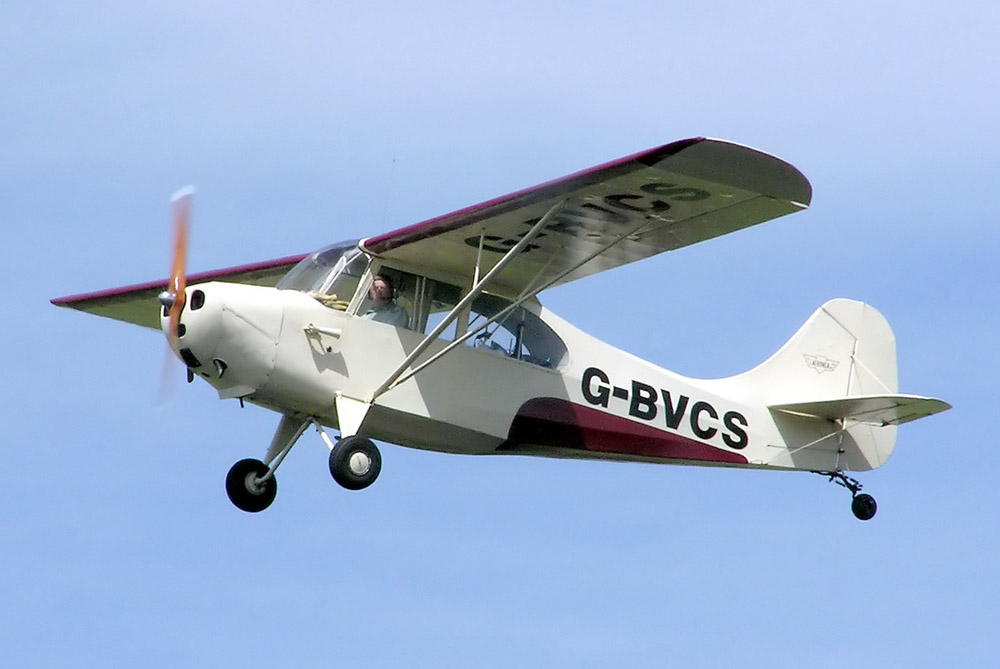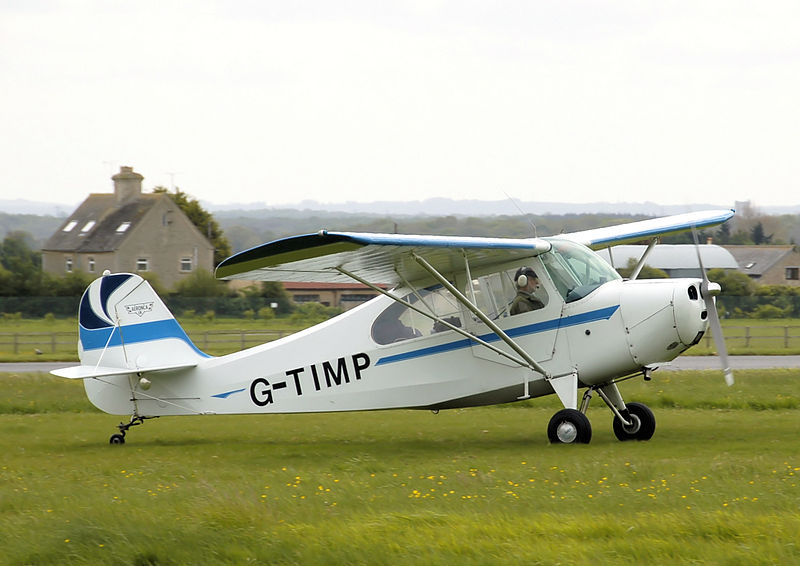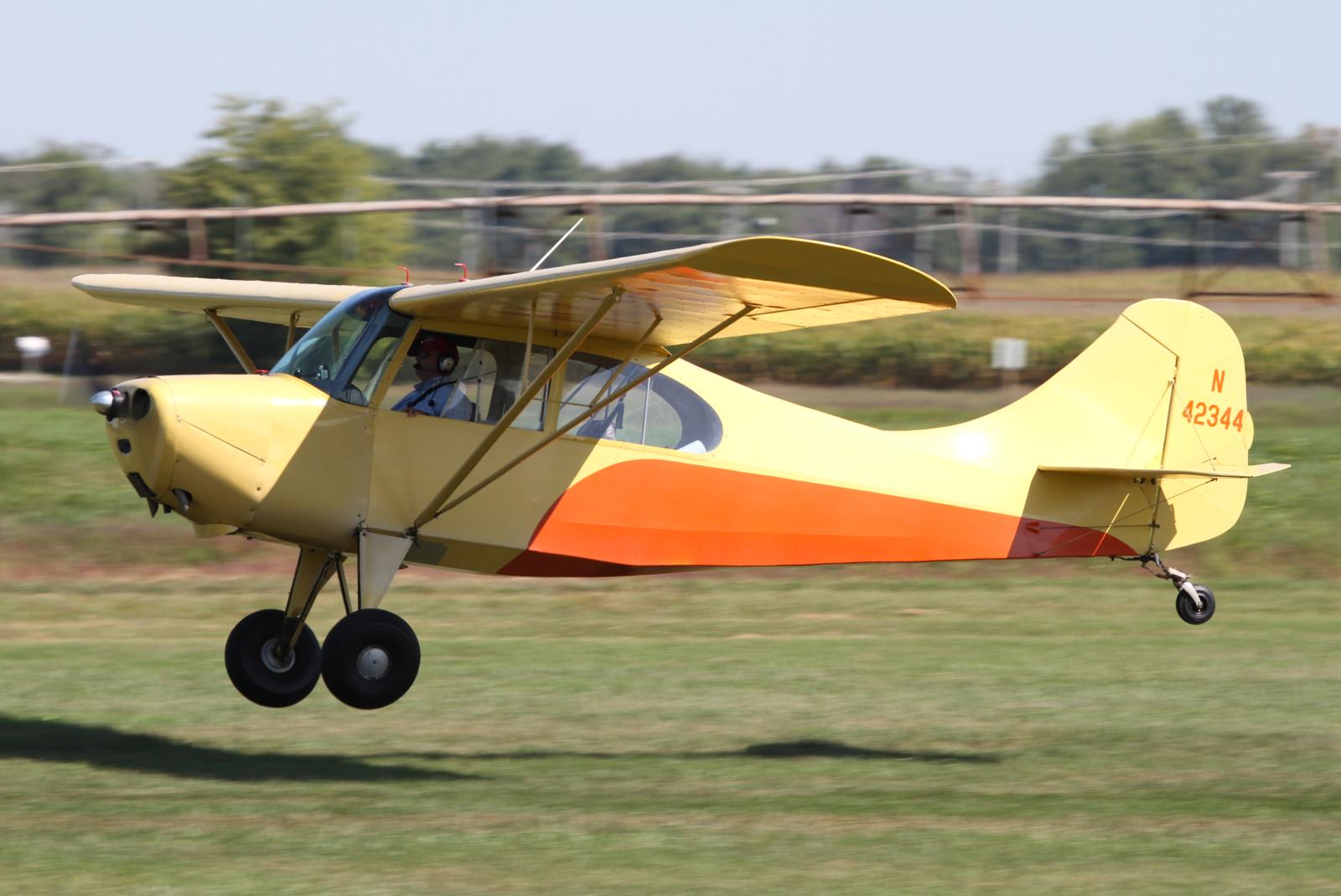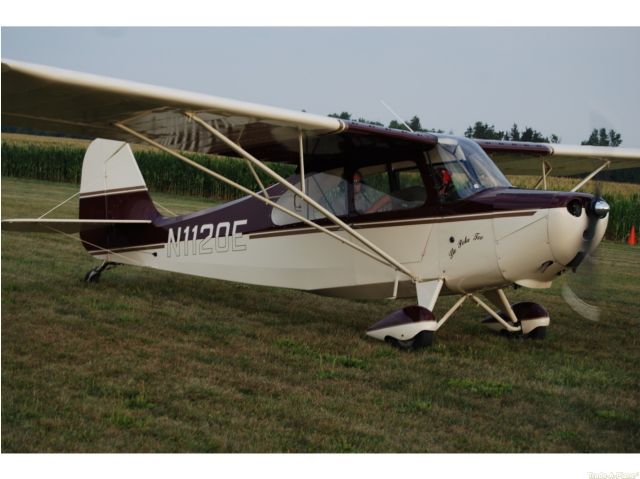
Aeronca 7 Champion
- CountryUnited States of America
- TypeTwo seat light aircraft
- Powerplants7AC - One 50kW (65hp) Continental A65-8 flat four piston engine driving a two blade fixed pitch propeller.
- Performance7AC - Max speed 161km/h (87kt), cruising speed 128km/h (70kt). Service ceiling 12,400ft. Range 740km (400nm).
- Weights7AC - Empty 325kg (740lb), max takeoff 533kg (1220lb).
- Dimentions7AC - Wing span 10.73m (35ft 2in), length 6.65m (21ft 6in), height 2.13m (7ft 0in). Wing area 15.8m2 (170sq ft).
- Capacity7 - Pilot and single passenger in tandem.
- ProductionApprox 10,000 Aeronca Champions (including L-16s and 7200 7ACs) built between 1946 and 1951.
One of the most successful light aircraft models was the Aeronca Champion in the postwar period in the US and saw a production of more than 10,000 units,
Modelled on the prewar aircraft K Scout, it featured some design variants such as a tandem seat arrangement instead of a side by side seating arrangement. It also featured a reduced span but had enhanced chord flapless wing design.
The 7AC was the first design variant of the Champion series. Follow up model all were basically similar except for the powerplant design. The variants included the 7BC with a 63kW (85hp) Continental C85-12 or O-190-1 (and built in bulk to fulfil requirements of the US Army as the L-16 liaison platform); the 7CC with a Continental C-90-12F; and the 7DC with a Continental C85.
Later, Aeronca licensed the Champion to the Champion Aircraft Corporation in 1951. However, Champion Aircraft focussed its energies on the 7EC Traveler which was fitted with a 67kW (90hp) Continental C90 (maiden flight in 1955), 7FC tricycle undercarriage Tri-Traveler and the 110kW (150hp) Lycoming O-320 powered Model 7GCB Challenger, with an enhanced wing span with flaps. It was the Challenger which paved way for the Citabria and later led to the development of the Decathlon and Scout.
Bellanca purchased the Champion Aircraft Company in September 1970 and the Champion once again was produced but was now known as the 7ACA Champ. Design improvements and changes incorporated a 45kW (60hp) Franklin 2A-120-B engine which replaced the outdated Continental. A cantilever spring steel main landing gear and modernised interior were other changes. It was manufactured in miniscule units in the early 1970’s.





